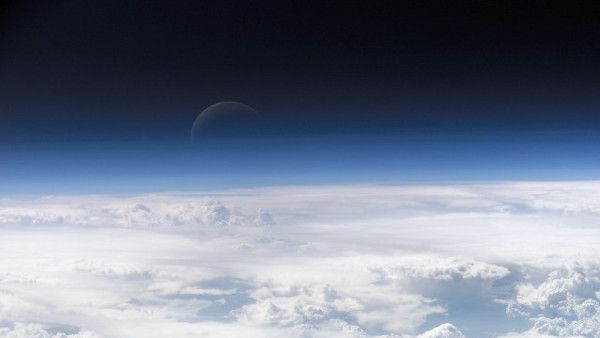Where is the Edge of Space?
Get answers to:
- What is the Kármán Line?
- How do we define the edge of space?
- What is the Armstrong Limit?
Edge of space really depends on what you mean because the Earth’s atmosphere doesn’t suddenly end, but gets thinner and thinner as altitude increases.
At an altitude of about 10,000km, the atmosphere is so thin that it becomes indistinguishable from the solar wind. At this point, we say the atmosphere has merged with the solar wind.
This is a possible definition for the edge of space: the place where the atmosphere ends and outer space begins. However, the upper region of the Earth’s atmosphere is very tenuous and, for practical purposes, can be considered a vacuum.
For example, the International Space Station orbits at an altitude of 400km and the Hubble Space Telescope at an altitude of 600km – which are definitely within the region of the Earth’s atmosphere known as the thermosphere. However, the atmospheric density is so low at that atoms travel, on average, several kilometers before encountering another atom.
Altitudes above 8km1 are known as “The Death Zone” because the atmospheric pressure is so low and there is so little available oxygen that, without pressurized air or oxygen, severe altitude sickness sets in and, eventually, leads to death. Above altitudes of 19km, the atmospheric pressure is so low that blood boils at body temperature (37°C).2
Even though there is not enough atmosphere for humans to survive, there is more than enough for weather to happen and airplanes to fly in.
In the 1950s, Theodore von Kármán (1881-1963) felt there needed to be a clear distinction between aeronautics and astronautics – with aeronautics requiring an atmosphere to work and astronautics needing the absence of an atmosphere. Through an exchange of letters and conversations with leading scientists and engineers in aeronautics and astronautics he arrived at a limit of 100km. This is accepted by the Fédération Aéronautique Internationale (FAI) as the official boundary of space. It is known as the Kármán Line
At this altitude, the atmosphere becomes too thin to support aeronautic flight because there is not enough aerodynamic lift to support a craft. The vehicle would need to be moving at orbital velocity (or faster) in order to generate sufficient lift. In other words, the Kármán Line is the altitude where the velocity to keep an aircraft aloft is equal to the orbital speed.
- Above 6km altitude, pressurized air or oxygen is strongly recommended. Above 10km, pure oxygen is required. Above 12km, pure pressurized oxygen is required.↩
- This is known as the Armstrong Limit. The absolute limit above which humans cannot survive in an unpressurized environment. It is named after Harry George Armstrong (1899-1983)↩
